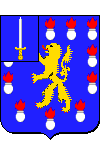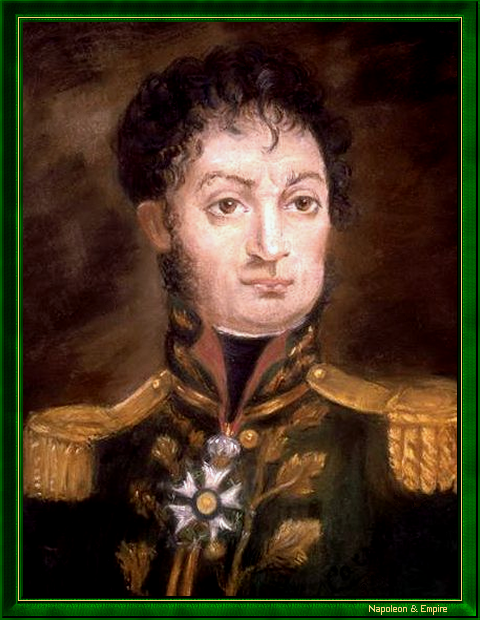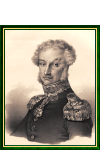Pierre Jacques Etienne Cambronne
Count of the Empire
Pronunciation:

Pierre Jacques Etienne Cambronne was born on December 26, 1770, the son of a merchant in Nantes, South Brittany, France.
In September 1791, after his father's death, he enlisted in the First Battalion of Volunteers of the Lower Loire. He first served in the Ardennes and the North, before being sent to fight the Vendée insurrection.
Lieutenant in September 1793, captain a year later, he took part in the Irish expedition in 1797, then in all the wars of the Empire, but did not achieve the rank of general until 1813.
However, this was not for lack of distinction. In 1799, at the capture of Zurich, he seized two cannons; on June 27, 1800, at the battle of Oberhausen, he was awarded the title of second grenadier de France (after La Tour d'Auvergne); in 1805, still a captain, he distinguished himself at Austerlitz; in 1806, at Jena; later at the siege of Saragossa, Aspern-Essling and Wagram.
The older he got, the more his bravery asserted itself. Baron de l'Empire in June 1810, colonel of a regiment of voltigeurs de la Garde in 1811, he fought in Spain for two years before leaving in early 1813 to join the Grande Armée in Germany, distinguishing himself by his intrepidity and finally earning his general's stripes at Hanau (October 30, 1813).
After the first abdication, his passionate devotion to Napoleon I's cause earned him command of the small troop that followed the Emperor to Elba , then of the tiny vanguard that led the way for the landing at Golfe-Juan.
Once in Paris, he refused the rank of major general, fearing that it would be seen as a pass, but accepted the dignities of count and peer of France.
On June 16, 1815, he attacked Ligny, and on the 18th, at Waterloo, commanded the last section of the guard. Shot in the left eyebrow, he was taken prisoner by the English, who took him to their country.
Having asked King Louis XVIII for permission to return to France, he was included in the order of July 25, 1815, which sent eighteen generals and senior officers before a council of war for betraying the king and attacking France and the government with an armed force.
Cambronne returned to France, appeared in court and was acquitted.
He died in his native town on January 28, 1842, and is buried in the Miséricorde cemetery.
"General Cambronne" by Antoine Fulcrand Carrière (Saint-Affrique 1804 - Agen 1856).

Cambronne denied having uttered his famous Merde!
But this was at a time when, married to a Scottish woman and made a viscount by Louis XVIII, he had every reason to want to draw a line under this episode. It is now generally accepted that he shouted it out of exasperation at the repeated summonses from the English.
It should also be noted that this was not his first time. We have preserved a complaint lodged against him in the 1790s for having insulted the national agent of Guérande in terms so coarse, says the latter, that I wouldn't dare repeat them.
Cambronne's name (but not his word!) is inscribed on the 8th column (north pillar) of the Arc de Triomphe de l'Étoile .
Other portraits

"General Cambronne". Print by François Séraphin Delpech (1778-1825).

"General Cambronne". Engraving by Bosselman, XIXth century.